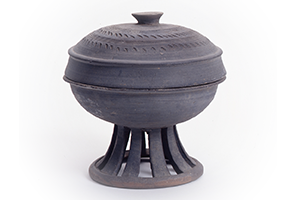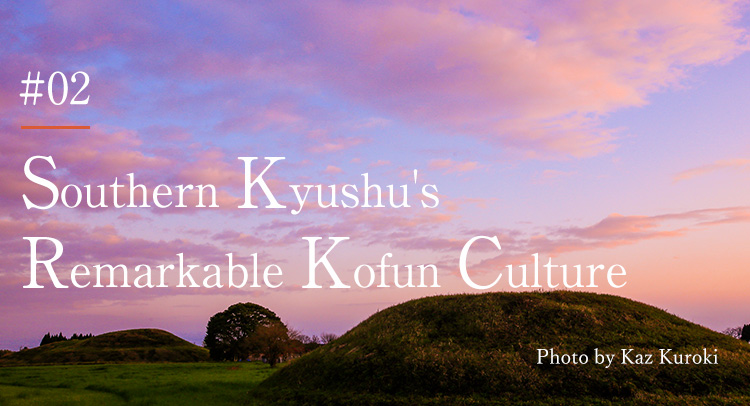Photo by Kaz Kuroki
Wider East Asian context: Connections with underground tunnel tombs
東アジアの視点から~地下式横穴墓との関連~

東アジアの視点から~地下式横穴墓との関連~

Saitobaru Underground Tunnel Tomb No.4
During the Final Jomon period, dolmens, which had already reached their zenith in the southwestern region of the Korean Peninsula, began to appear in northern Kyushu. While the top structure of these dolmens disappeared during the Yayoi period, box-shaped stone coffins, their lower burial facility section, became widely distributed, mainly in northern Kyushu but also in the Chugoku region. In the 4th century, stone slab tombs based on these box-shaped stone coffins from northwestern Kyushu appeared. These spread southward to northern Kagoshima Prefecture and inland to Hitoyoshi Basin, Kumamoto Prefecture, from where they spread into a corner of Miyakonoji Basin, Miyazaki Prefecture.
These stone slab tombs, which appeared before underground tunnel tombs, played a part in bringing about the birth of underground tunnel tombs in inland regions. In the Ebino Basin, for instance, there are many underground tunnel tombs in which the entrance to the tomb’s vertical pit has been sealed off with stone slabs, something that is only witnessed in this area. While both underground tunnel tombs and stone slab tombs were products of southern Kyushu’s distinctive burial culture, they did not exist in isolation. Rather, they were created in the course of interaction with the Korean Peninsula, which resulted in heightening their uniqueness.
In terms of the wider picture in East Asia, to date 15 keyhole-shaped burial mounds (a tomb shape seen as unique to the Japanese archipelago) have been confirmed on the Korean Peninsula, mainly in the Yeongsan River area in the southwestern region (former Mahan and Paekche). In addition, underground tunnel tombs in which hollow burial chambers are dug in the ground (again are seen as unique to the Japanese archipelago) have been confirmed in places such as Gongju and Buyeo, once capitals of Paekche.
The fact that keyhole-shaped burial mounds were built in this solitary manner provides major clues as to the kinds of individuals who were buried in these tombs. However, experts are divided in their interpretation as to whether these are the tombs of individuals from Paekche or individuals from the Japanese archipelago, with many different ideas having been presented regarding their nature. What is clear, though, is that Wolgye-dong Janggobun is the only instance where two keyhole-shaped burial mounds have been built together; in every other case, only a single mound exists, showing that there is no continual line of descent. In respect to the amount of labor needed to build these tombs, estimates suggest that the creation of a single mound would have necessitated a labor force in the region of at least several tens to hundreds of thousands of people. Therefore, even in this period of single mounded tombs, the individuals buried in the tombs and their supporters wielded enough power to mobilize and control large numbers of people.
Meanwhile, the burial culture of digging hollow burial chambers into the ground originated from underground tunnel tombs. Danjiri Site (Gongju), where a group of 24 such burial chambers has been detected, features burial chambers that are similar in structure to underground tunnel tombs and early tunnel tombs. However, these tombs differ greatly to keyhole-shaped burial mounds on the peninsula as they were located adjacent to cities (Gongju and Buyeo) and were created as family units.
The existence of keyhole-shaped burial mounds and underground tunnel tombs cannot be understood without taking into consideration the existence of Hyuga (southern Kyushu). Here, we get a clear sense of how the unique characteristics of southern Kyushu were not a closed-off phenomenon; rather, they existed within the wider historical currents of East Asia.





